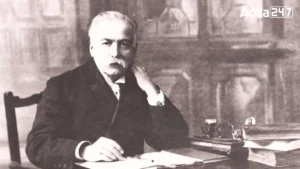The anemometer, a device used to measure wind speed, is crucial in meteorology and various scientific fields. Its invention spans centuries, beginning with Leon Battista Alberti in the 15th century. This article explores the history and contributions of these inventors to the development of the anemometer.
What is an Anemometer?
An anemometer is a device used to measure wind speed, direction, and pressure. It plays a crucial role in weather forecasting and is commonly found in weather stations worldwide. The word “anemometer” originates from the Greek word “anemos,” meaning wind. It was first invented around 1450 by Italian architect Leon Battista Alberti.
Inventor of the Anemometer
Leon Battista Alberti, an Italian architect and polymath, is credited with inventing the anemometer around 1450. His design marked a significant advancement in the measurement of wind speed and direction, laying the foundation for subsequent developments in meteorology and related sciences.
History of Anemometer
The first known anemometer was created by Leon Battista Alberti in 1450. Over the centuries, various improvements were made by scientists like Robert Hooke and John Thomas Romney Robinson. Modern advancements include Derek Weston’s addition of wind direction measurement in 1991 and Andreas Pflitsch’s development of the sonic anemometer in 1994.
Types of Anemometers
There are several types of anemometers:
- Cup Anemometer
- Description: Features cups on a vertical axis that rotate with the wind.
- Use: Widely used in educational settings, research labs, and meteorology.
- Hot Wire Anemometer
- Description: Uses a heated wire to measure wind speed and pressure.
- Use: Commonly employed in air conditioning, heating, and ventilation systems.
- Wind Vane Anemometer
- Description: Measures wind speed and direction using a propeller and tail.
- Use: Provides comprehensive wind data in meteorological applications.
- Laser Doppler Anemometer
- Description: Utilizes the Doppler Effect with laser beams to measure wind flow.
- Use: Found in advanced applications such as jet engines and hydrology studies.
- Sonic Anemometer
- Description: Measures wind speed using sound waves and multiple sensors.
- Use: Ideal for precise measurements in research and specialized meteorological tasks.
Uses of Anemometer
Anemometers are essential in various fields:
- Weather Forecasting: Provides real-time wind data for accurate weather predictions.
- Aviation: Critical for safe takeoffs and landings, assessing wind conditions at airports.
- Marine Navigation: Helps sailors gauge wind speed and direction for safer navigation.
- Environmental Monitoring: Used in environmental studies to understand air movements and patterns.
Who is Leon Battista Alberti, the Inventor of Anemometer?
Leon Battista Alberti was a Renaissance polymath known for his diverse talents in architecture, art, mathematics, and cryptography. He is celebrated as the inventor of the anemometer, a device for measuring wind speed and direction, marking a significant contribution to early meteorology. Beyond his architectural masterpieces like San Sebastiano and Sant’Andrea churches in Mantua, Alberti’s legacy spans fields from fine arts to scientific instrumentation.




 Which is the Highest Desert in the World...
Which is the Highest Desert in the World...
 Who was Known as the Father of Modern Cu...
Who was Known as the Father of Modern Cu...
 Which Indian State has the Largest Waste...
Which Indian State has the Largest Waste...







